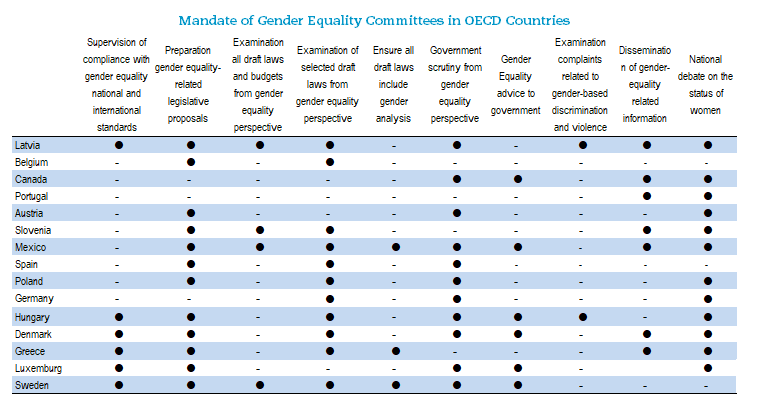Gender-sensitive parliaments: Integrating a gender lens in parliamentary work
March 2018 - Parliaments are the supervisor of gender equality in public life. They can scrutinise the government’s gender equality actions through questioning cabinet members and holding public hearings (used in 72% of OECD countries), as well as reviewing gender equality reports issued by government departments (used in 64% of OECD countries). Parliaments can also oversee budget cycle processes and guarantee that expenditures equally benefit men and women, for example, by ensuring allocation of sufficient funds or requesting gender-disaggregated statistics to monitor impact.
Parliamentary committees play a key role reviewing bills proposed by the government and are also a forum where community concerns can be raised. Two-thirds of OECD countries have gender-equality parliamentary committees, which can be fully dedicated to the issue or, more often, have a combined portfolio. The mandates of these committees vary, but most of them draft gender equality legislation and examine selected draft laws from a gender equality perspective. However, in only four of these countries – Latvia, Sweden, Mexico and Slovenia – do committees have the power to look at all draft laws through a gender-sensitive lens.
A range of mechanisms has been introduced to take into account the different potential impacts of legislative proposals on men and women. Hearings with women’s groups are the most widely used practice, together with documents submissions by for women’s groups, other stakeholders and experts, as well as requirements to use sex-disaggregated data in legislative work. Measures such as gender advisors to provide technical support for legislative work, as well as requirements for gender impact assessment are still rare in OECD countries.
Documents connexes


